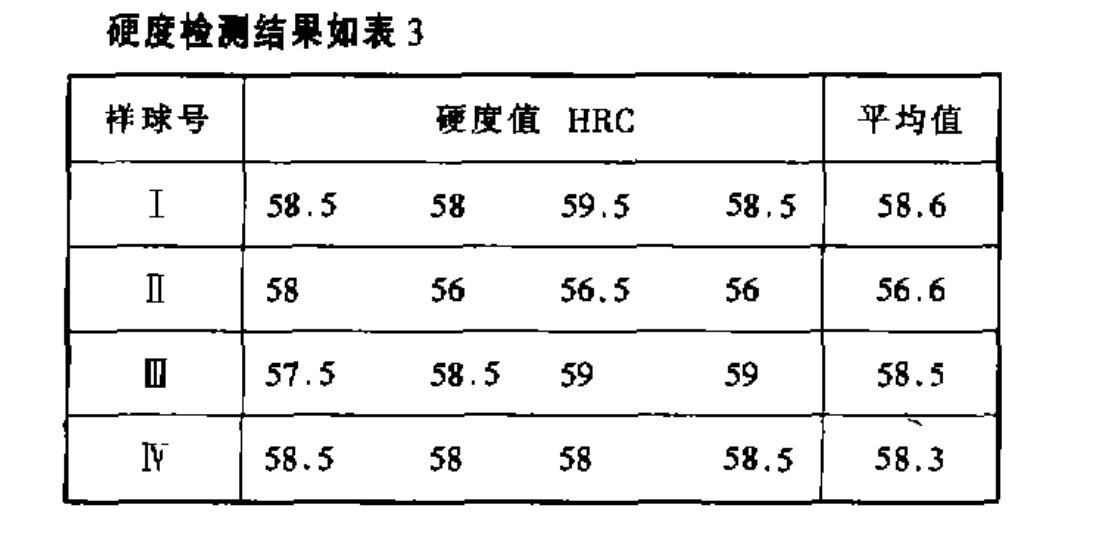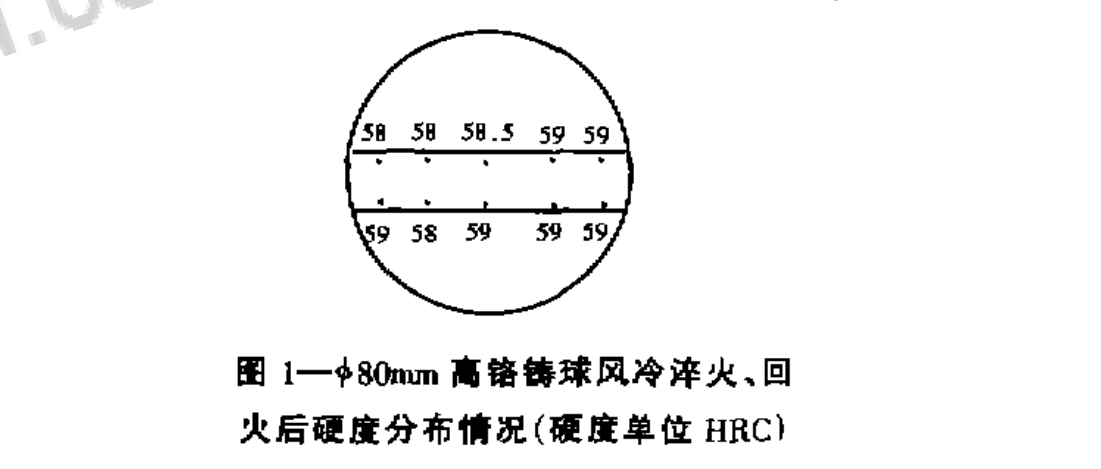Experimental study on air quenched high chrome grinding balls (2)
2.Production of test balls
In order to make use of the MQ-3 ball tester for the impact fatigue test, we produce an 80mmm size ball.
2.1 Smelting and casting
The melting equipment is a medium frequency coreless induction furnace with a nominal capacity of 850kg, and the pouring equipment is a 1-ton tilting type crane ladle.
The composition is calculated according to the charge’s chemical composition and the alloy element absorption rate of various ferroalloys. The chemical analysis before tapping is carried out.
CO2 solidified quartz sand mold was used in the mold. The whole sand mold compact integrity, moderate strength, cavity surface finish, parting surface smooth.
2.2 Heat treatment
The possibility of replacing oil-cooling quenching with air-cooling quenching was explored through experiments
- chemical composition of test ball (80mm grinding ball)
1.99%C、0.48%Si、1.37% Mn、14.00%Cr、0.12% 、0.15%
Ni、O.O18%Ti、O.039%S、0.018%P
- Heat treatment technology
Heating furnace adopts 12KW box type furnace
Sample balls I: Under 350 °C, the furnace was heated to 650 ± 10 °C for 1 H, then heated to 950 ± 10 °C for 2 H, then cooled for 25 min and tempered at 450 ± 10 °C for 4 H
Sample balls II: Under 350 °C, 650 ± 10 °C for 1 H, 950 ± 10 °C for 2 H, Fan Cooling. 450 ± 10 °C for 4 H.
Sample balls III: Under 350 °C, 650 ± 10 °C for 1 H, 980 ± 10 °C for 2 H, 20’ Oil Cooling, 450 ± 10 °C temperings
Sample IV: Under 350 °C, 650 ± 10 °C for 1 H, 980 ± l 0 °C for 2 H, Fan Cooling, 450 ± 10 °C for 4 H
2.3 Hardness and impact value
1) Hardness test on the surface
2) Metallographic structure
The microstructure of the treated ball was determined by metallographic analysis as follows:
Tempered martensite + EUTECTIC carbide + Secondary Carbide + retained austenite
The results show that the hardness of this high chromium cast ball can reach CR13 type high chromium cast ball after air cooling quenching and tempering at 450 °C
The results show that this high chromium cast ball’s hardness can reach the range HRC55-62 that CR13 type high chromium cast ball reaches through the oil-cooling quenching process.
3)Fatigue test
The sample ball IV was heat treated with 30 high chromium cast balls of the same composition, and the overall hardness was checked by random inspection. The results are shown in Fig. 1; the impact fatigue life of 25 balls is longer than that of Cr13 balls quenched by oil in the impact fatigue test machine of MQ-3 type.
3. Conclusion
3.1 Based on the composition of common Cr 13 type high chromium cast ball, the hardenability of the material can be improved obviously by adjusting the chromium content, increasing the manganese content, and adding a small amount of Mo, Ni, Ti, and other alloy elements. The larger diameter high chromium cast ball of this material can be quenched and heated under the condition of Air Cooling.
3.2 Air-cooling quenching of high chromium cast ball can avoid air pollution and possible fire caused by oil cooling and significantly reduce production costs.
3.3 Compared with oil-cooled quenching, air-cooled quenching reduces the internal stress of the ball due to the decrease of the cooling rate, which can reduce the danger of quenching and cracking of the high chromium cast ball, and also has the advantage of increasing the impact fatigue life of the high chromium cast ball under the actual working conditions, can make the user get undeniable economic benefits.




